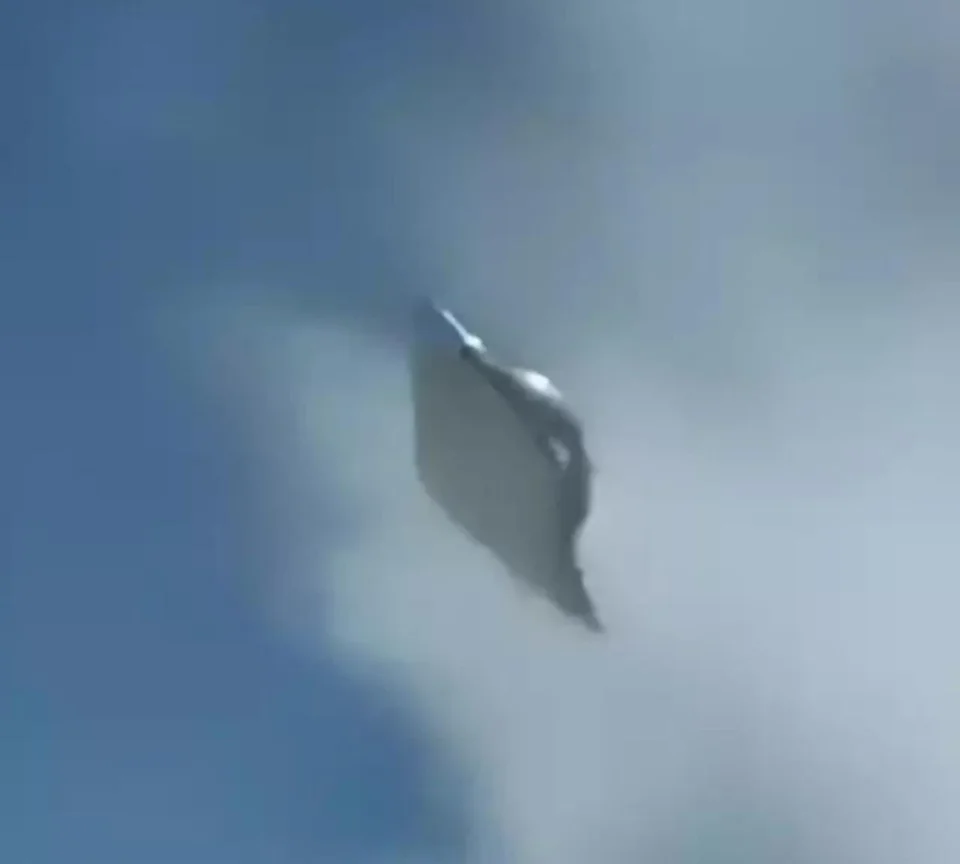Antioquia Colombia UAP Incident (2022)

The Antioquia UAP/UFO incident presents an intriguing narrative that unfolds in the airspace between Medellín and Santa Fe. The core of this event is a video captured at 1:00 p.m., documenting a peculiar object floating at a stationary point, later moving towards the aircraft piloted by the individual who recorded the footage and their co-pilot. This occurrence has sparked widespread interest and speculation, especially after being shared and discussed on various platforms, including Reddit, where it gained significant attention.
Jorge A. Arteaga, the pilot in the Antioquia UFO incident, firmly stated that the object he encountered was neither a balloon, a drone, nor any known aircraft. He described the object as initially stationary, which then moved towards his aircraft, defying conventional behavior associated with known aerial objects. The incident occurred on May 12, 2022, near San Jerónimo, and involved a Cessna T303 Crusader aircraft. San Jerónimo is located near Medellín and Santa Fe de Antioquia in Colombia. It is situated northwest of Medellín and is relatively close to Santa Fe de Antioquia.
Medellín, the capital of the Antioquia department in Colombia, is nestled in a valley, giving it a temperate climate year-round, earning it the moniker “City of Eternal Spring.” With a population of over 2.5 million, it’s a city celebrated for its transformation from a crime-ridden area in the late 20th century to a vibrant hub of culture and innovation, featuring annual festivals like the Flower Festival and advanced public transport systems. The nearest airport, José María Córdova International Airport, is located about 20 km southeast of the city.
Santa Fe de Antioquia, often simply called Santa Fe, is a historic town northwest of Medellín, with a population of around 23,000. Founded in 1541, it’s known for its colonial architecture and warmer climate due to its lower elevation. The town is a tranquil retreat from city life, famous for the Puente de Occidente bridge. There’s no airport in Santa Fe de Antioquia, making the nearest one in Medellín the primary gateway for visitors.
The Cessna T303 Crusader is a light twin-engine aircraft designed by Cessna, an American aircraft manufacturing company. Introduced in the early 1980s, it was intended to fill the gap in Cessna’s product line between their single-engine models and larger twins. The T303 features a pressurized cabin, retractable landing gear, and seating for up to six people.
The video, characterized by its authentic and unanticipated nature, showcases the object from the perspective of the aircraft’s cockpit, providing a unique vantage point for observation. Initially perceived as a mere speck against the sky, especially on smaller screens, a closer examination reveals the object’s presence much earlier in the footage than initially apparent. This detail, combined with the object’s subsequent movements and the camera’s zoom causing a momentary loss of visibility, adds layers to the analysis of the footage.
Skeptics and observers have proposed various theories regarding the nature of the object, ranging from it being a balloon to more speculative notions. However, the pilot’s firm stance, asserting that the object was not a balloon and expressing their startled reaction to its movements, adds a layer of complexity to the interpretation of the event. The video’s analysis further explores the object’s trajectory and its relative motion to the aircraft, suggesting that the apparent changes in direction could be a result of the plane’s movement rather than the object’s autonomous navigation.
In the discussed video, particularly intriguing is the swift departure of an unidentified object from the vicinity of the aircraft. This moment has sparked analysis, primarily because of the remarkable speed and trajectory with which the object turning and moving away. The nature of this object—whether it is a different aircraft, a drone, the previously observed UFO, or something entirely unknown—adds layers of mystery. The rapid movement diverges from typical flight patterns of conventional aircraft or drones, thus intensifying the intrigue around the object’s origins and capabilities. This departure not only raises questions about what the object could be but also about the technological that could enable such swift and precise movements in the sky.
The U.S. government has acknowledged the potential safety implications of Unidentified Aerial Phenomena (UAP) on aviation, highlighting incidents where commercial and military aircraft encountered UAPs. Notable cases include the 1986 Japan Airlines sighting over Alaska and the 2007 Alderney sighting, illustrating the safety concerns posed by UAPs’ proximity and unpredictable behavior. Additionally, the phenomenon of “UFOs tagging air vehicles” indicates UAPs following or maneuvering close to aircraft, raising significant flight safety risks.
The Antioquia and Gimbal incidents both feature UFOs with unique behaviors like rotating and flying belly-first, as observed by pilots. These maneuvers are atypical for standard aircraft, highlighting the mysterious nature of these encounters and contributing to the broader discussion on unexplained aerial phenomena.
The craft in the image appears more reminiscent of a manta ray rather than a stingray, due to the broader ‘wing’ structure that extends from its sides. The color of the object seems to be a blend of grey and white shades, with a notable sheen that suggests a metallic surface. The contours and the shape are smooth and aerodynamic, hinting at a design that could potentially slice through the air with minimal resistance. The object’s belly seems to be lighter, possibly due to sunlight reflecting off its underside, providing a sense of three-dimensionality to the craft.
The Antioquia UAP incident, involving a Cessna T303 Crusader near Medellín and Santa Fe de Antioquia, stands as compelling UFO evidence. The pilot, Jorge A. Arteaga, reported an encounter with an object displaying unorthodox aerial behavior, challenging our understanding of conventional aircraft. This incident joins a series of encounters acknowledged by governments, including the notorious Gimbal sighting, underscoring the potential risks UAPs pose to aviation safety. As debate continues, this event enriches the ongoing discourse on UAPs, urging a reevaluation of airspace security and the quest for understanding phenomena beyond our current technological grasp.


